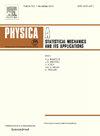异质环境下的汽车跟随和变道模型综述
IF 2.8
3区 物理与天体物理
Q2 PHYSICS, MULTIDISCIPLINARY
Physica A: Statistical Mechanics and its Applications
Pub Date : 2024-09-27
DOI:10.1016/j.physa.2024.130127
引用次数: 0
摘要
互联自动车辆(CAV)和人类驾驶车辆(HV)在交通场景中的共存预计将长期存在。因此,提出有效的混合交通流控制策略对于缓解交通拥堵、降低能耗和提高交通流效率至关重要。然而,现有关于汽车跟随和变道控制的综述遇到了几个问题:首先,目前的研究相对脱节,缺乏一个全面的框架来总结异构环境下的跟车和变道模型;其次,现有综述主要关注单车层面的模型,很少探讨考虑多车交互的耦合控制策略;第三,目前的综述文章所探讨的驾驶场景相对单一或没有明确区分。为了填补这一研究空白,本文从三个方面对汽车跟车和变道模型进行了新颖的探讨:i) HVs CF 和 LC 行为仿真模型;ii) CAVs CF 和 LC 机动控制模型;iii) 考虑多车交互的 CAV CF 和 LC 机动控制基本耦合架构及其在一些典型驾驶场景中的应用,包括排队调度、交叉路口、坡道和 CAV 专用车道。本文旨在为异构环境下车辆操纵控制的未来研究提供有价值的见解。本文章由计算机程序翻译,如有差异,请以英文原文为准。
A review of car-following and lane-changing models under heterogeneous environments
The coexistence of Connected Automated Vehicles (CAVs) and Human-driven Vehicles (HVs) in traffic scenarios is expected to persist in the long term. Hence, proposing effective mixed traffic flow control strategies is crucial for alleviating traffic congestion, reducing energy consumption, and enhancing traffic flow efficiency. However, existing reviews on car-following and lane-changing control encounter several issues: First, current studies are relatively disconnected, lacking a comprehensive framework to summarize both car-following and lane-changing models in heterogeneous environments; Second, existing reviews predominantly focus on individual vehicle-level models, rarely exploring coupling control strategies considering multi-vehicle interactions; Third, the explored driving scenarios in current review articles are relatively single or are not clearly distinguished. To fill this research gap, this paper offers a novel perspective on car-following and lane-changing models across three perspectives: i) HVs CF and LC behaviour simulation models; ii) CAVs CF and LC maneuver control models; and iii) The basic coupling architecture of CAV CF and LC maneuver control considering multi-vehicle interaction and its applications in some typical driving scenarios, including platoon scheduling, intersections, ramps, and CAV dedicated lanes. The objective of this paper is to provide valuable insights for future research on vehicle maneuver control in heterogeneous environments.
求助全文
通过发布文献求助,成功后即可免费获取论文全文。
去求助
来源期刊
CiteScore
7.20
自引率
9.10%
发文量
852
审稿时长
6.6 months
期刊介绍:
Physica A: Statistical Mechanics and its Applications
Recognized by the European Physical Society
Physica A publishes research in the field of statistical mechanics and its applications.
Statistical mechanics sets out to explain the behaviour of macroscopic systems by studying the statistical properties of their microscopic constituents.
Applications of the techniques of statistical mechanics are widespread, and include: applications to physical systems such as solids, liquids and gases; applications to chemical and biological systems (colloids, interfaces, complex fluids, polymers and biopolymers, cell physics); and other interdisciplinary applications to for instance biological, economical and sociological systems.

 求助内容:
求助内容: 应助结果提醒方式:
应助结果提醒方式:


